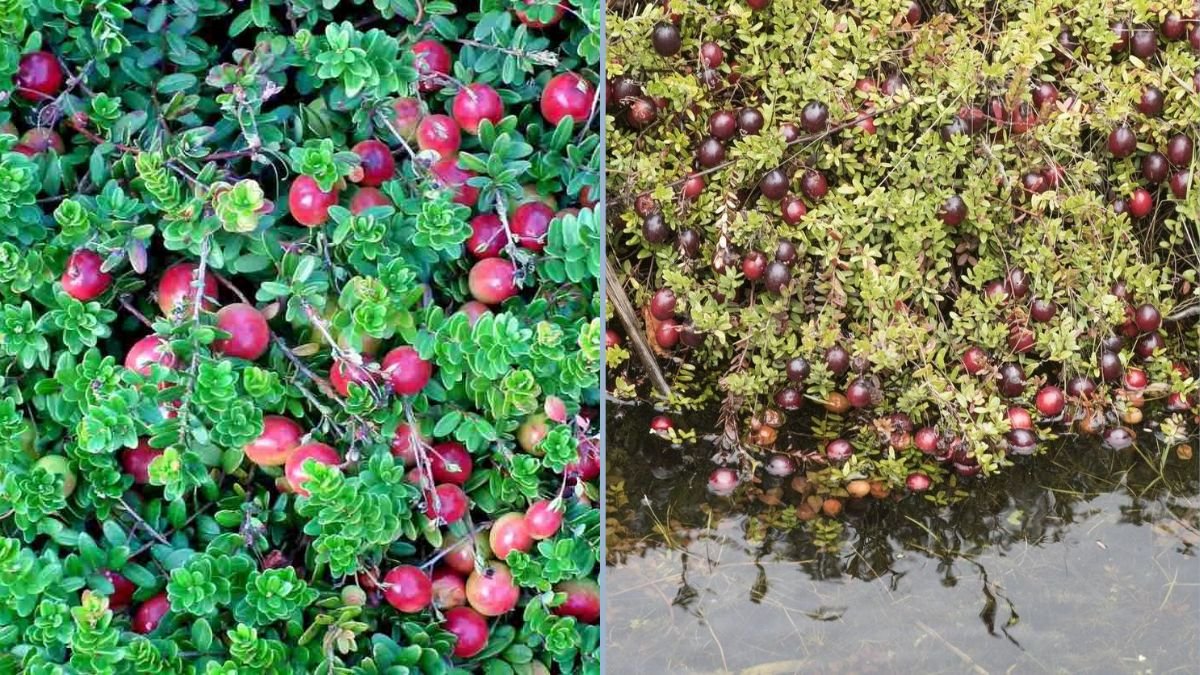Cranberries (Vaccinium macrocarpon) are small, vibrant red berries celebrated for their tangy flavor, high nutritional value, and health benefits. Known for supporting urinary tract health, providing antioxidants, and adding a unique flavor to desserts and juices, cranberries are an excellent addition to a home garden.
While traditionally grown in specialized bogs, cranberries can also thrive in containers or small garden spaces, making them accessible for home gardeners. This guide will walk you through everything you need to know to plant, care for, and harvest cranberries successfully at home.
1. Why Grow Cranberries at Home?
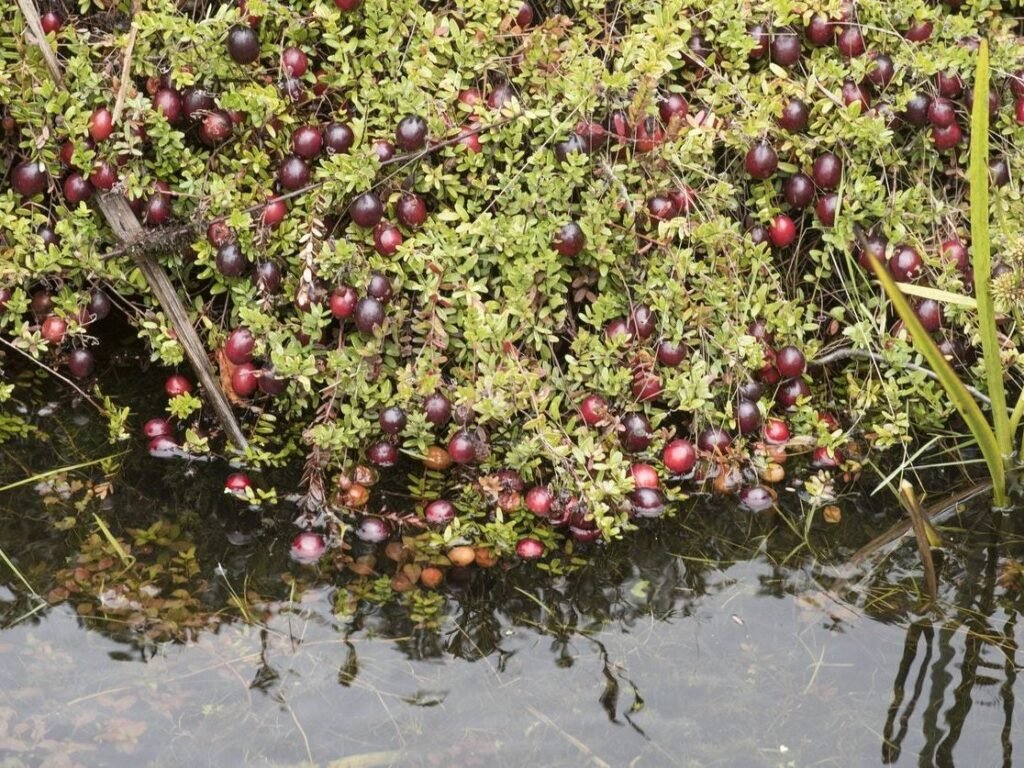
Growing cranberries at home offers several benefits:
- Fresh, organic fruit: Enjoy chemical-free berries straight from your garden.
- Nutritional value: Rich in vitamin C, antioxidants, and dietary fiber.
- Decorative appeal: Glossy green foliage and bright red berries enhance garden aesthetics.
- Fun project: Ideal for gardeners looking for a unique, rewarding fruit.
Homegrown cranberries allow gardeners to experience the full lifecycle from planting to harvest, producing berries that are more flavorful than store-bought options.
2. Understanding Cranberry Growth Requirements
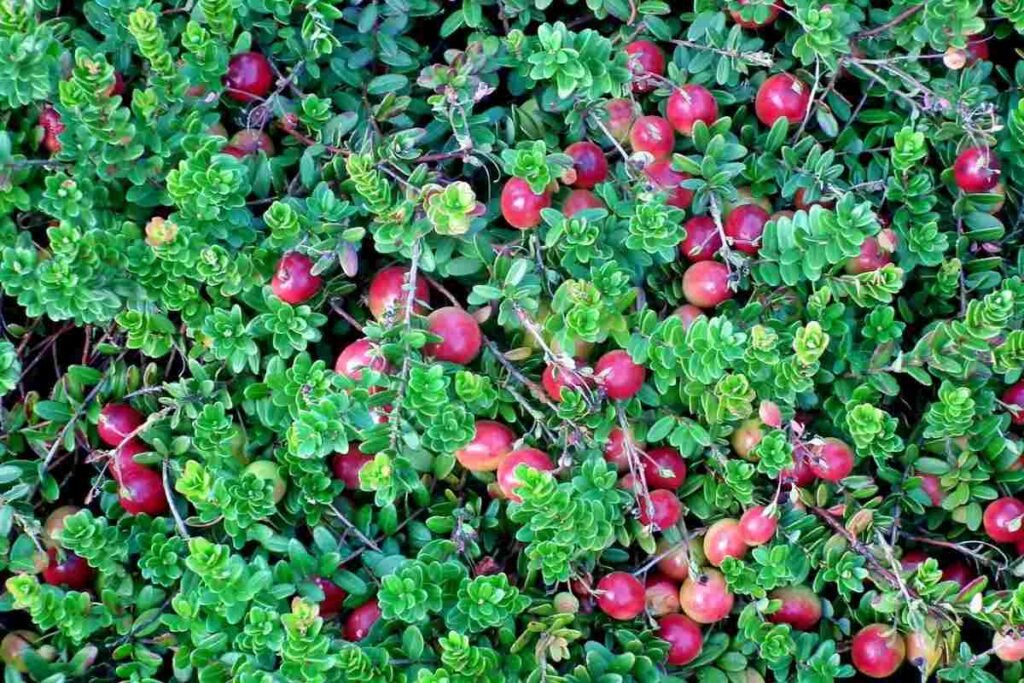
Cranberries have specific soil and climate needs:
- Soil: Acidic soil with a pH between 4.0 and 5.5.
- Moisture: Requires consistently moist soil but cannot tolerate waterlogging.
- Sunlight: Full sun exposure for at least 6–8 hours daily.
- Climate: Prefers cool, temperate regions, though container cultivation allows flexibility.
Understanding these requirements ensures healthy growth and abundant fruit production.
3. Choosing the Right Cranberry Variety
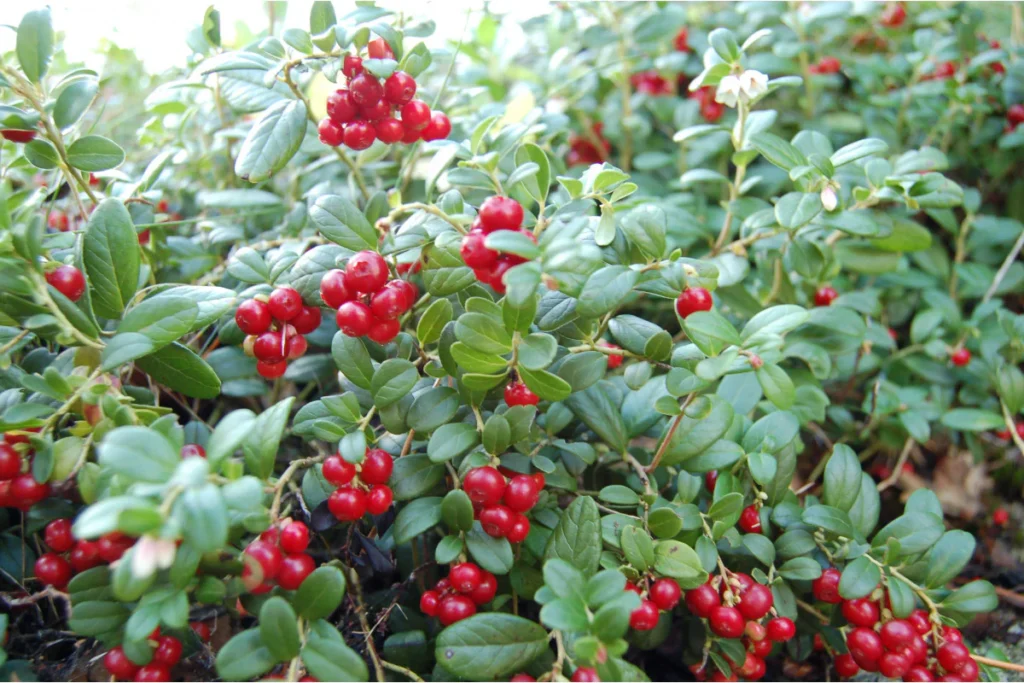
Selecting the right variety is crucial:
- Stevens: Large berries, high yield, and ideal for home gardens.
- Pilgrim: Smaller berries, very hardy, and disease-resistant.
- Early Black: Produces early in the season and adapts well to container growth.
Choosing the right variety ensures better growth, fruit quality, and disease resistance.
4. Propagation: Seeds, Cuttings, or Plugs
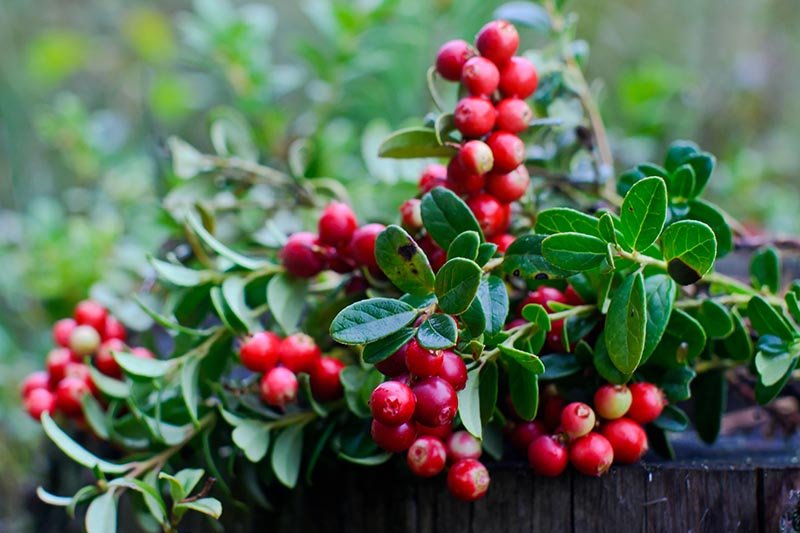
Cranberries can be propagated using seeds, cuttings, or plugs:
- Seeds: Extract from ripe berries, clean thoroughly, and sow in acidic soil. Germination may take 2–3 months.
- Cuttings: Semi-hardwood cuttings are ideal for faster establishment.
- Plugs: Small plants from nurseries provide quick and reliable growth.
💡 Tip: For faster fruiting, nursery plugs or cuttings are recommended over seeds.
5. Choosing the Right Container or Garden Bed
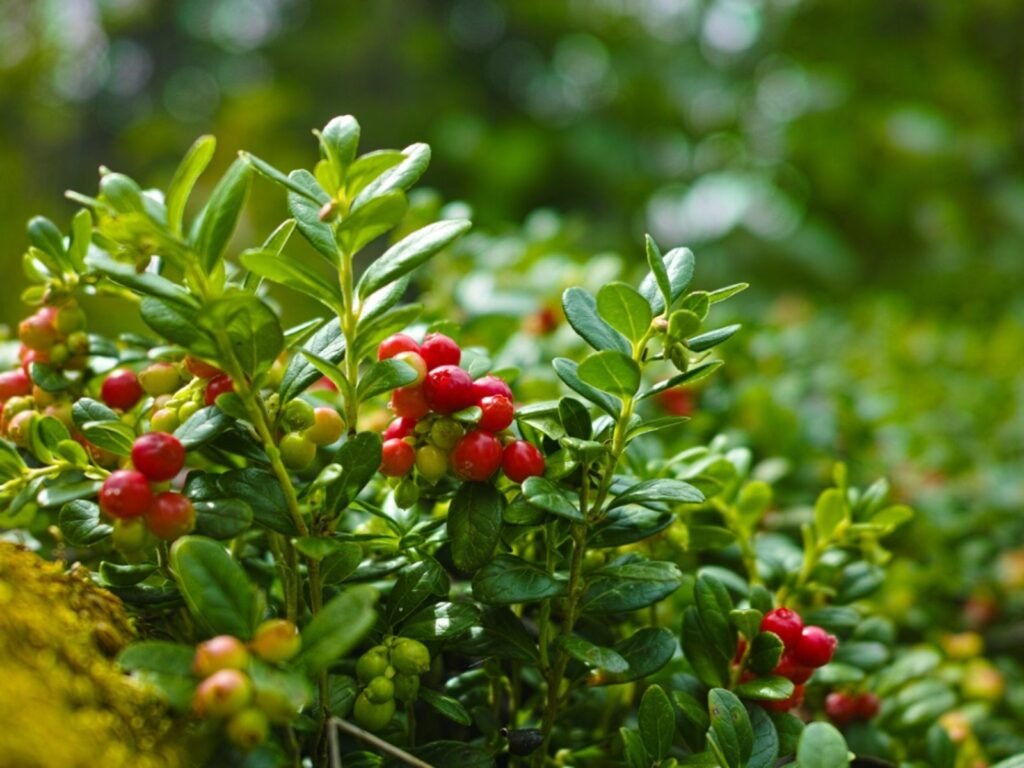
Cranberries can thrive in pots, raised beds, or traditional garden soil:
- Containers: Use a wide, shallow pot (12–18 inches deep) with excellent drainage.
- Raised beds: Ensure acidic soil, proper drainage, and a depth of 12–15 inches.
- Location: Full sun and good airflow are essential for healthy growth.
Choosing the right growing medium ensures healthy roots and vigorous plants.
6. Preparing the Soil Mix
Cranberries require acidic, well-draining soil:
Recommended soil mix:
- 50% peat moss
- 30% sand
- 20% well-rotted compost
💡 Tip: Avoid garden soil with high lime content, which increases pH and reduces berry production.
7. Planting Cranberries
Follow these steps for successful planting:
- Fill the pot or bed with the prepared soil mix.
- Space plants 12–18 inches apart to allow growth and airflow.
- Plant cuttings or plugs at the same depth as they were in the nursery tray.
- Water immediately to settle the soil.
Proper planting ensures strong root establishment and healthy growth.
8. Watering Cranberries
Cranberries require consistent moisture:
- Keep soil moist at all times, especially during establishment.
- Avoid waterlogging by ensuring proper drainage.
- Mulch with pine needles or shredded bark to retain moisture and maintain acidity.
Consistent watering promotes strong roots, healthy foliage, and abundant berry production.
9. Fertilizing Cranberries
Cranberries benefit from acidic fertilizers:
- Use fertilizers specifically formulated for acid-loving plants, such as azaleas or rhododendrons.
- Apply a balanced fertilizer (10-10-10) in small doses during the growing season.
- Avoid over-fertilization, which can lead to excessive leaf growth at the expense of fruiting.
Proper nutrition ensures healthy plants and high-quality berries.
10. Supporting Cranberry Growth
Cranberries are low-growing, trailing plants:
- Use shallow trellises or small stakes for support if needed.
- Allow runners to spread naturally, or gently guide them to cover the soil surface.
- Avoid overcrowding, which reduces airflow and increases disease risk.
Support and guidance ensure healthy plant structure and maximum fruit yield.
11. Pruning and Maintenance
Pruning improves air circulation, light penetration, and fruit production:
- Trim runners that are too crowded.
- Remove damaged or diseased foliage promptly.
- Prune lightly after harvest to encourage new growth.
Well-maintained cranberry plants produce larger, sweeter berries and resist diseases.
12. Flowering and Pollination
Cranberries produce small, bell-shaped flowers:
- Most varieties are self-pollinating, but pollinators like bees enhance fruit set.
- Ensure good sunlight and airflow for optimal flowering.
- Hand pollination can help indoor or container-grown plants.
Proper pollination ensures healthy flowering and maximum fruit yield.
13. Harvesting Cranberries
Cranberries are usually ready for harvest in late summer to early autumn:
- Fruits are ripe when fully red, firm, and glossy.
- Harvest by gently twisting or cutting berries to avoid damaging the plant.
- Regular harvesting encourages continuous growth and fruiting.
Homegrown cranberries are fresh, tangy, and perfect for juices, jams, and desserts.
14. Common Pests and Diseases
Cranberries are hardy but may face challenges:
- Aphids and spider mites: Treat with neem oil or insecticidal soap.
- Fungal infections: Ensure good airflow and avoid overhead watering.
- Birds: Use netting to protect berries during ripening.
Regular monitoring ensures healthy plants and high-quality fruits.
15. Long-Term Care for Cranberries
For sustained growth and fruiting:
- Maintain acidic soil with occasional peat moss or pine needle mulch.
- Keep soil consistently moist and mulched.
- Fertilize lightly each growing season.
- Prune runners and remove damaged foliage to prevent disease.
With proper care, cranberries can produce fruit for several years, providing a reliable homegrown crop.
16. Tips for Growing Cranberries in Containers
- Use wide, shallow pots to accommodate runners.
- Place containers in full sun for at least 6–8 hours daily.
- Avoid heavy fertilizers; cranberries prefer low-nutrient, acidic soil.
- Consider companion plants like blueberries for similar care requirements.
Container cultivation allows flexibility and easier care, making cranberries suitable even for apartment gardening.
17. Final Thoughts: Growing Cranberries at Home
Cranberries are rewarding, nutritious, and visually appealing plants for home gardens. By selecting the right variety, preparing acidic soil, providing consistent moisture, sunlight, and proper fertilization, you can grow thriving cranberry plants in containers or garden beds.
Container gardening allows urban households to experience the joy of growing exotic fruits, enjoy fresh, tangy berries, and create a miniature edible garden at home. With patience and regular care, your cranberry plants will thrive, producing vibrant, healthy berries year after year.
Growing cranberries at home is the perfect project for beginners and experienced gardeners alike. By following these step-by-step care tips, you can enjoy the full experience of planting, nurturing, and harvesting your own fresh cranberries, right from your backyard, terrace, or balcony.
